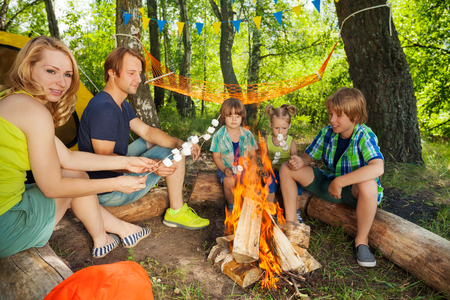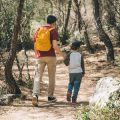Understanding the British Campsite Environment
When planning a family camping adventure in the UK, it’s important to become familiar with what makes British campsites unique. Unlike some international sites, UK campsites are often set amidst lush countryside, rolling hills, or even close to historical landmarks, offering a blend of natural beauty and cultural charm. Most campsites have clearly marked pitches for tents and caravans, communal green spaces for children to play safely, and pathways that help everyone navigate easily between areas. Facilities such as shower blocks, washing-up stations, and small onsite shops are common and well-maintained. Many sites also feature playgrounds or nature trails designed for families.
One thing British campsites are known for is their friendly atmosphere—neighbours often greet one another, and site wardens are available to offer help or advice. Local wildlife can be part of the adventure too: children might spot squirrels, hedgehogs, foxes, or a variety of birds. While this can be magical, it’s wise to remind children not to feed wild animals and to always tidy away food at night. Weather can be unpredictable, so packing waterproofs and layers helps everyone stay comfortable and safe.
By getting to know these typical features, facilities, and local quirks of British campsites, families can feel more at home from the moment they arrive—making safety an easy part of their everyday camping experience.
2. Essential Preparation Before Setting Off
Before you head off for your British family camping adventure, a little careful preparation goes a long way in ensuring everyone’s safety and peace of mind. The unpredictable British weather, varied landscapes, and the unique needs of children all call for thoughtful planning. Here’s how to get ready:
Packing Smart for British Weather
The UK is known for its quick-changing weather – it can be sunny one moment and pouring rain the next. Layering is key! Make sure each child has:
| Item | Purpose |
|---|---|
| Waterproof jacket & trousers | Protection from sudden downpours |
| Wellington boots | Keeping feet dry on muddy ground |
| Warm layers (jumpers, fleeces) | Staying cosy during chilly evenings |
| Sun hat & sunglasses | Shielding from sun exposure |
| Lightweight clothing | Comfort during warmer spells |
| Extra socks & changes of clothes | Always handy after outdoor play or unexpected puddles! |
Key Safety Gear to Pack
Your family kit should include essential safety items to deal with minor mishaps and help prevent accidents. Here’s a handy checklist:
- First aid kit: Stocked with plasters, antiseptic wipes, tweezers, insect bite cream, and any necessary medications.
- Torch/headlamps: One per person for safe movement at night (plus spare batteries).
- High-visibility jackets or bands: Especially useful if your campsite is busy or near roads.
- Sunscreen and insect repellent: For protection from sunburn and bites.
- Whistle for each child: Teach them to use it only in emergencies to alert adults if they are lost.
- Reusable water bottles: To stay hydrated during active days.
- Shoes suitable for uneven ground: Sturdy trainers or hiking boots minimise trips and falls.
Creating Your Family Safety Checklist
A simple checklist keeps everyone on track and ensures nothing crucial is forgotten. Involve your children in ticking off items—they’ll feel empowered and part of the adventure! Here’s an example you can print or jot down before every trip:
| Family Camping Safety Checklist | |
|---|---|
| Packed suitable clothing for all weather? | □ |
| Brought all essential safety gear? | □ |
| Taught children basic campsite rules? | □ |
| Labeled belongings with contact info? | □ |
| Packed emergency contacts & health cards? | □ |
| Brought familiar comfort items (teddy, blanket)? | □ |
| Packed plenty of snacks & water? | □ |
An Extra Word of Comfort for Parents…
No amount of packing guarantees perfection—but being prepared helps you handle surprises with confidence. By involving your children in preparations, you teach them valuable life skills and build excitement for the journey ahead. Remember: camping together is about fun, discovery, and making memories—safely!
![]()
3. Setting Up a Safe Family Pitch
Choosing the perfect spot for your family’s tent or caravan is one of the first steps to ensuring a safe and enjoyable camping experience in the UK. Here are some practical tips to help you create a secure base for your little adventurers:
Tips for Choosing the Safest Spot
When arriving at a British campsite, take time to walk around and select a pitch that’s away from obvious hazards such as rivers, steep drops, thick woodland, or busy roads within the site. If possible, pick an area with good visibility so you can keep an eye on your children while they play. Avoid pitching too close to communal facilities like toilets or car parks, as these areas tend to have more foot traffic and moving vehicles.
Maintaining Clear Boundaries for Children
Once you’ve chosen your spot, establish clear boundaries with your children. Involve them in identifying landmarks—perhaps a distinctive tree or a colourful windbreak—that mark the edge of your family’s territory. For younger children, setting up visible markers such as bunting or small flags around your pitch can help them recognise their safe space and reduce the risk of wandering off.
Ensuring Equipment Is Secure
Make sure that all camping equipment—especially guy ropes, tent pegs, and awnings—are properly secured and not posing tripping hazards. Tidy away loose items when not in use, and keep sharp tools such as mallets or pegs out of children’s reach. If you’re using a caravan, double-check that steps are stable and doors are safely latched. Encourage children to help with simple safety checks; this not only keeps them involved but also helps them understand what makes your pitch safe.
Extra Peace of Mind
Consider drawing up a simple ‘family camp agreement’ where everyone agrees on basic ground rules—such as always asking before leaving the pitch or staying within sight after dusk. By working together and keeping safety at the heart of your adventure, you can relax and make wonderful memories knowing your little ones are well looked after.
4. Keeping Children Safe and Engaged
Family camping in the UK is a wonderful way for children to explore the outdoors, but it’s essential to keep them both safe and meaningfully involved during your stay. Here are some practical approaches that blend British campsite culture with child-friendly engagement.
Practical Ways to Involve Kids in Campsite Safety
Empowering children with responsibility not only keeps them safer but helps build their confidence. Consider these steps:
| Task | How Children Can Help |
|---|---|
| Setting Up Camp | Let kids help pitch the tent by passing pegs or choosing a flat spot away from fire pits. |
| Site Rules | Create simple safety rules together, like staying within sight of the main tent or caravan. |
| Wildlife Awareness | Teach children how to spot local wildlife and avoid disturbing animals or nests. |
| Campsite Boundaries | Mark boundaries with bunting or natural markers—let children help decorate these! |
Ideas for Safe Play on British Campsites
Many UK campsites offer open fields, woodlands, and play areas. Supervised exploration is key. Try these activities:
- Nature Scavenger Hunt: Create a list of local flora and fauna for children to find, emphasising observation over collection.
- Bushcraft Skills: Teach age-appropriate skills like leaf identification or simple knot tying, always under supervision.
- Traditional Games: Encourage classic British games such as rounders or hide-and-seek within safe zones.
- Storytelling Evenings: Gather around the campfire for gentle stories—an ideal way to wind down safely at dusk.
Fostering Independence Responsibly
Campsites provide a safe environment for children to practise independence, but clear guidelines are vital. Here’s how you can do this confidently:
| Independence Skill | Safety Tip |
|---|---|
| Short Solo Walks (e.g., to water tap) | Set clear landmarks; agree on check-in times; use walkie-talkies if allowed by site rules. |
| Biking Around Site Paths | Ensure helmets are worn; stick to designated paths; establish a buddy system. |
| Helping with Meals | Younger children can wash veg or set tables; older ones can help stir (with adult present). |
| Packing Their Own Rucksack | Create a checklist together so nothing essential is forgotten; teach the importance of carrying water and sun cream. |
A Nurturing Approach Builds Trust and Confidence
The goal is to allow children space to grow while maintaining their safety. Celebrate small successes and always debrief at the end of each day—what did they enjoy, what do they want to try next time? With thoughtful guidance, British family campsites become both an adventure playground and a learning environment where memories—and safe habits—are made together.
5. Awareness of Local Wildlife and Hazards
Exploring the great British outdoors is a magical part of family camping, but it’s important to be mindful of the local wildlife and natural hazards that children may encounter. Teaching your little ones about the creatures and plants around them not only nurtures curiosity but also ensures their safety.
Common British Animals and Birds
British campsites are often home to friendly animals like squirrels, hedgehogs, rabbits, foxes, and a variety of birds such as robins, blackbirds, and woodpeckers. While these creatures are generally harmless if left undisturbed, it’s wise to remind children not to approach or feed wild animals. Observing from a distance helps protect both wildlife and curious young explorers.
Insects: Friends and Foes
Children will likely come across insects such as bees, wasps, ants, spiders, and midges—especially near water or wooded areas. Encourage kids to wear light-coloured clothing, use insect repellent approved for their age, and avoid leaving sweet foods or drinks uncovered. If stung or bitten, clean the area gently and monitor for any allergic reactions, seeking medical help if necessary.
Plants to Watch Out For
The British countryside boasts many beautiful plants and flowers. However, some like nettles, brambles, giant hogweed, and foxgloves can cause irritation or harm. Teach children never to pick or eat wild plants or berries unless you’re certain they are safe. Show them how to recognise common hazardous plants so they can confidently avoid them during their adventures.
Navigating Waterways Safely
Ponds, rivers, and streams are tempting places to play but can present dangers. Always supervise children closely near water and explain the risks of slippery banks or fast-moving currents. Wearing wellies or waterproof shoes helps prevent slips and keeps feet dry during exploration.
Embracing Nature with Confidence
By fostering an understanding of local wildlife and natural hazards, you empower your child to enjoy Britain’s landscapes safely. With gentle guidance and a spirit of adventure, every family camping trip becomes a joyful journey filled with discovery—and peace of mind for parents.
6. Emergency Preparedness and What to Do If Something Goes Wrong
Every family camping adventure should be filled with fun, but being prepared for emergencies is just as important for keeping everyone safe. Knowing what to do if your child feels unwell, suffers an injury, or becomes separated from the group can make all the difference. Here’s a step-by-step guide tailored to British campsites, ensuring parents and children alike feel secure and confident in any situation.
Responding to Illness or Injury
If a child falls ill or gets injured while camping, stay calm and assess the situation. For minor ailments—such as headaches, insect bites, or scraped knees—use your first aid kit to provide basic care. Make sure your kit includes plasters, antiseptic wipes, antihistamines, and pain relief suitable for children. If symptoms persist or worsen, seek help from campsite staff who are often trained in first aid.
When to Call UK Emergency Services
If you believe the situation is serious—for example, difficulty breathing, severe bleeding, loss of consciousness, or suspected broken bones—call 999 immediately. Clearly state your location (using postcode or nearest landmark), describe the emergency, and follow instructions provided by the operator. Remember that many rural campsites may have limited mobile signal; familiarise yourself with nearby emergency phones or locations with reliable coverage upon arrival.
What To Do If a Child Gets Lost
Losing sight of your child is every parent’s worry. Begin by calmly retracing your steps and checking common areas like playgrounds or washrooms. Inform campsite staff right away—they’re familiar with the area and can quickly organise a search. Many UK campsites have specific lost child protocols; some may use a tannoy system or designated meeting points.
Teaching Your Child What To Do
Before your trip, teach your child to stay put if lost and not to wander further away. Show them how to identify safe adults, such as campsite wardens in uniform or families with children. Encourage them to memorise key information: their name, your phone number, and your pitch number.
Campsite-Specific Protocols
Upon arrival at any British campsite, take time to review their safety procedures. Ask about their emergency contacts, closest medical facilities, and lost child policy. Point out emergency exits and assembly points to your family. Some sites provide wristbands for children with parent contact details—take advantage of these where available.
Reassuring Your Child After an Incident
If something does go wrong, it’s vital to comfort your child and reassure them that you’re there to help. Take time afterwards to discuss what happened calmly and positively so they feel confident about handling unexpected situations in the future.
With these steps in mind, you’ll be well-prepared for any hiccup during your family camping adventure—keeping everyone safe while nurturing independence and resilience under the British skies.
7. Promoting a Positive Camping Experience
Creating Comforting Routines for Children
Establishing familiar routines is essential for helping children feel secure while camping in the great British outdoors. Simple actions, such as having a set bedtime ritual—perhaps reading a favourite story by torchlight or sharing a warm mug of cocoa—can ease the transition from home to tent. Make mealtimes special with family-style picnics, and involve your child in small tasks like setting up sleeping bags or collecting firewood (with supervision). These comforting routines not only provide reassurance but also help children understand what to expect each day, making the campsite environment feel safe and welcoming.
Managing Anxieties in New Environments
It’s natural for children to feel a bit anxious when away from home comforts. Encourage open conversations about their feelings and listen patiently to their concerns. Offer gentle reassurances, explaining that you’re always close by and that it’s normal to hear new sounds at night or see unusual wildlife during the day. Bringing along a favourite cuddly toy or blanket can make a world of difference, offering familiarity amidst the excitement. If worries arise about safety—whether it’s campfires, strangers, or getting lost—talk together about the safety rules you’ve set as a family, reinforcing that these guidelines are there to keep everyone happy and healthy.
Building Lasting Family Memories
Campsites across Britain offer wonderful opportunities for families to bond and create cherished memories. Plan activities that everyone can enjoy together: nature walks to spot native birds, scavenger hunts through the woods, or evenings spent singing songs around the campfire. Don’t forget to capture these moments with photographs or encourage children to draw pictures of their adventures in a journal. Each shared experience adds another layer of trust and togetherness within your family, all while staying mindful of campsite safety practices.
Keeping Safety at the Heart of Your Adventure
Throughout your camping journey, prioritise safety in every activity without dampening the spirit of fun and exploration. From teaching children how to respect campfires to ensuring everyone knows the layout of the campsite, these lessons become part of your shared adventure stories. By weaving comforting routines, understanding emotions, and creating joyful memories—all underpinned by careful attention to safety—you’ll foster confidence in your children and nurture a lifelong love for camping together in Britain’s beautiful outdoors.


